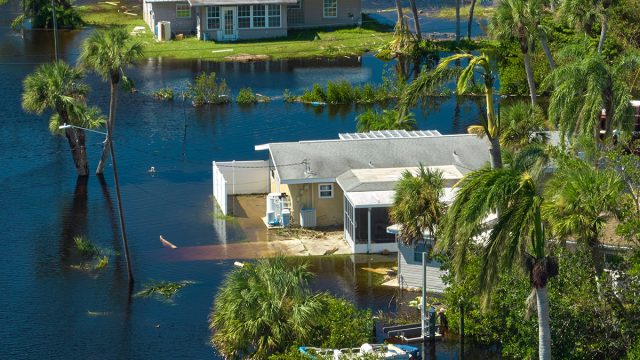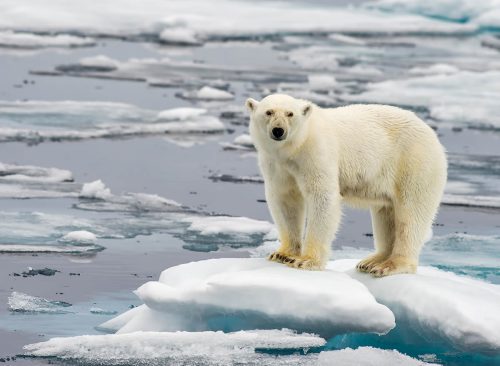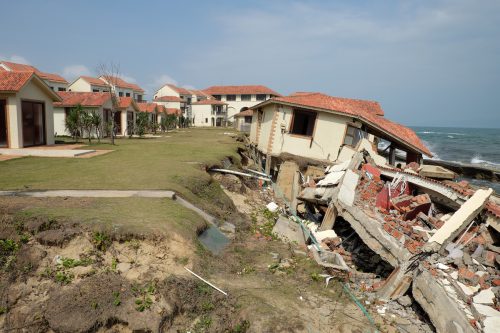NASA Study: Sea Level Along Contiguous U.S. Coastlines Could Rise as Much as 12 Inches By 2050
A warming planet is causing glaciers to melt, raising sea levels worldwide.

A new NASA study indicates that the sea level along U.S. coastlines could rise more than a foot by the year 2050, at the high end of previous estimates, a development with potentially serious consequences. NASA’s Sea Level Change Team analyzed nearly three decades of satellite observations before reaching this conclusion.
While certain natural phenomena can influence sea levels—including the orbit of the moon, which influences tide levels, and the weather patterns of El Niño and La Niña—climate change has been and will continue to be the major contributor. A warming planet is causing glaciers to melt, raising sea levels worldwide. But an increasingly hot Earth influences sea levels in a more obscure way. Read on to find out more.
RELATED: The 10 Most “OMG” Science Discoveries of 2022

“Global sea level has been rising for decades in response to a warming climate, and multiple lines of evidence indicate the rise is accelerating,” said NASA in a news release. “The new findings support the higher-range scenarios outlined in an interagency report released in February 2022.” That report was developed by multiple agencies including NASA, the National Oceanic and Atmospheric Administration (NOAA), and the U.S. Geological Survey. It projected significant sea level rise by region, including:
- 10 to 14 inches of rise on average for the East Coast
- 14 to 18 inches for the Gulf Coast
- 4 to 8 inches for the West Coast

To check those estimates, a team led by scientists at NASA’s Jet Propulsion Laboratory in Southern California analyzed 28 years of satellite altimeter measurements of sea surface height. The researchers then correlated them with NOAA tide gauge records dating as far back as 1920. “The researchers noted that the accelerating rate of sea level rise detected in satellite measurements from 1993 to 2020— and the direction of those trends—suggest future sea level rise will be in the higher range of estimates for all regions,” said NASA.

“A key takeaway is that sea level rise along the U.S. coast has continued to accelerate over the past three decades,” said Ben Hamlington, leader of the NASA Sea Level Change Team. “We’ve been hearing from practitioners and planners along the coasts that they need more information on shorter timescales – looking not 70 or 80 years into the future, but looking 20 or 30 years into the future,” he said. “The bottom line is that when looking ahead to what we might experience in coming years, we need to consider these higher possibilities.”

According to the National Oceanic and Atmospheric Administration (NOAA), sea level rise has two major causes: melting ice from glaciers and seawater expanding because of rises in global temperatures. Melting ice from Antarctica and Greenland have caused about a third of the global average sea level rise since 1993, says NASA. Heat stored in the ocean is another culprit, responsible for between one-third and one-half of global sea level rise, NASA says. The last decade has been the ocean’s warmest since at least 1800, and ocean temperatures hit a new high in 2021. Ocean water expands as it warms, NOAA explains. Experts say sea levels have risen one foot in the last century.

“Sea level rise poses a serious threat to coastal life around the world,” says National Geographic. Some of those dangers include increasingly intense storm surges, flooding, and damage to coastal areas. “Lost homes, lives and livelihoods are among the worst impacts of rising sea levels,” says the World Economic Forum. The organization estimates that by the year 2100, 410 million people could be at risk from coastal flooding as global warming causes further ocean expansion, pushing sea levels even higher.














